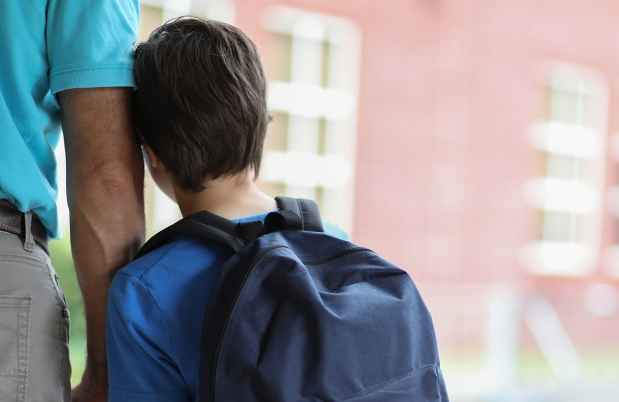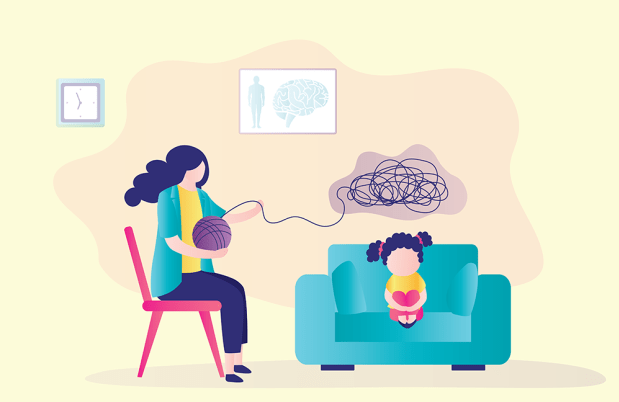Understanding Anxiety in Kids and Teens
Anxiety is the body’s normal stress response. Learn how anxiety can be managed and treated when it becomes too much.
March 26, 2024
As a parent, teacher, babysitter, or even neighbor, you may notice behavior that concerns you. Though you may not be able to immediately identify it, you know something is not right.
Anxiety in children can show up in different ways, such as avoidance of activities or experiences, irritability, and difficulty sleeping. All of these things may point to an issue larger than “kids being kids.”
But what is anxiety—and what causes it in kids? What symptoms should you be looking for? And how can it be successfully managed?
Keep Reading To Learn
- How anxiety presents itself in kids and teens
- Understanding the types of anxiety and symptoms
- How anxiety is treated in kids and teens
Understanding Mental Health in Children and Teens
Mental health challenges may come about as a reaction to environmental stressors, including trauma, the death of a loved one, school issues, and/or experiencing bullying. All these factors—and more—can lead to anxiety in kids and adolescents.
Noticing changes in children and teens is crucial, as symptoms of most mental health challenges start before age 25. It’s critical to address these concerns as soon as possible: The quicker we address the problem, the better chance a young person can return to everyday activities.
Anxiety disorders have the potential to affect every part of a young person’s life, including their physical health, emotional well-being, and social skill development.
The combined impact can lead to kids feeling socially isolated, stigmatized, and incapable of being active members of their community.
Mental health has a direct relationship with a child’s physical health. Both physical and mental health influence how children think, feel, and act on both the inside and out.
Teen Anxiety and ADHD
Fairlee C. Fabrett, PhD, provides an overview of anxiety and ADHD in youth
Anxiety Can Develop in Anyone at Any Time
Anxiety is the most common mental health disorder. It affects millions of young people in the United States.
Anxiety disorders are often exhibited as excessive worry about daily events or activities (e.g., work or homework) that occurs more frequently than not and interferes with educational, occupational, and/or social lives.
How common is anxiety in young people?
- Research done by the National Research Council and Institute of Medicine revealed an estimated 32% of adolescents living in the U.S. experienced an anxiety disorder
- Although anxiety disorders occur more often in females than males, age, ethnicity, and geography play no role in who develops anxiety
- Unfortunately, only 7% of young people who need mental health help receive it
Not All Anxiety Is the Same
Anxiety is the body’s normal stress response. However, children who struggle with clinical anxiety encounter interference in their daily social, academic, or home lives. Though anxiety is a universal emotional experience, excess anxiety can indicate there’s a problem that needs to be addressed.
It can be difficult to determine the type of anxiety someone is experiencing. Some anxieties are short-term and situational, while others are sudden and inexplicable.
Learning the difference between stress, fear, uncertainty, panic, and social anxiety can help with understanding someone’s anxiety signs and symptoms.
Stress vs. Anxiety
Stress, like anxiety, is an emotional response.
Stress is usually caused by an external trigger, like taking an exam or getting into a fight with a friend. Anxiety, on the other hand, can be an internally created fear that seems to take on a life of its own.
Both have a similar set of symptoms: fatigue, difficulty concentrating, anger or irritability, and trouble with sleeping. Unlike stress, clinical anxiety is not short-term and does not go away after the stressor is taken away.
Fear vs. Anxiety
Fear is the emotional response to a real or perceived threat. Anxiety is the anticipation of a future threat. People also use the word “anxiety” to describe lingering nervousness or a constant sense of tension or worry.

Uncertainty
Anxious individuals tend to have an intolerance for uncertainty. Sometimes people with anxiety call this “fear of the unknown.”
Those who chronically worry equate uncertainty with bad outcomes. To lower the risk of a future threat, people with anxiety may try to minimize the number of uncertain situations they encounter. This avoidance strengthens anxiety in the long run.
Panic
A panic attack is a surge of anxiety that peaks between 10 and 30 minutes and includes at least several physical symptoms, such as a racing heart or shortness of breath. Panic attacks can come out of the blue or have an identifiable trigger.
Those with panic disorder experience panic attacks that come out of the blue and fear having panic attacks in the future. They also may start to avoid situations in which they think they may have a panic attack.
Often individuals with panic disorder feel as if they are losing control, having a heart attack, or going to die.
Some of the physical symptoms of panic disorder include:
- Rapid heartbeat
- Sweating
- Chest pain
- Shortness of breath
- Dizziness
- Stomach distress
How do panic and anxiety differ? Whether unprovoked or triggered, panic attacks happen quickly and reach their climax within minutes. Anxiety may appear gradually and last for extended periods of time.
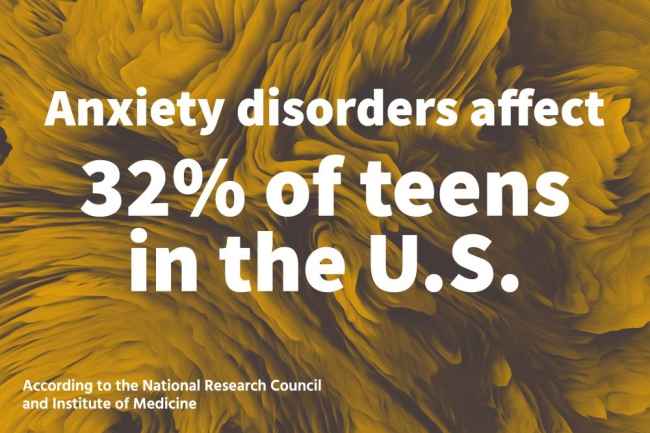
Social Anxiety
Social anxiety disorder is a fear of being judged or embarrassed in social situations. In children, social anxiety often happens in peer settings, including school and extracurriculars. It may also occur when interacting with adults or members of authority.
The core of social anxiety in kids and teens is a worry of being negatively evaluated by others in social situations. Their concern may be that others are judging them as anxious, weak, dumb, dull, intimidating, filthy, or unlikeable.
Some children and teens have the fear of offending others and feeling rejected as a result.
Children who experience social anxiety may avoid a range of social experiences, such as participating in class, eating in front of others, participating in extracurricular activities, ordering in restaurants, using public bathrooms, and going to social events with peers.
Some of the hallmark symptoms of social anxiety are:
- Blushing
- Trembling
- Stammering or stuttering
- Sweating
- Staring
- Crying or throwing a tantrum
- Freezing in place
- Clinging to a peer or parent
- Shrinking back to make oneself less noticeable
With social anxiety, extensive avoidance of social situations occurs. Often the person’s intense fear and anxiety increase the more they avoid the situation.
Chronic social anxiety often lasts, at a minimum, six months. Social anxiety disorder symptoms have to persist for at least six months before a diagnosis is considered.
Learn how McLean can help young people master their anxiety
Separation Anxiety
Separation anxiety disorder is one of the most common anxiety disorders in kids. It involves a worry that something bad will happen to the child or caregiver upon separation.
This can lead to excess worry, sleep issues, social distress, physical symptoms of anxiety, or difficulty in school.
Typically, separation anxiety peaks at three years old. As kids’ brain function continues to develop, they can better understand that separation from an attachment figure is not permanent. In addition, the older they get, the more independent they become.
With separation anxiety disorder, though, this worry does not diminish and may intensify.
Phobias
Phobias are fears of objects or situations. This type of anxiety can be disruptive to a person’s life. Some very common phobias in kids and teens are:
- Hemophobia (fear of blood)
- Emetophobia (fear of vomiting or seeing others vomit)
- Trypanophobia (fear of needles or medical procedures involving injections/hypodermic needles)
Fear associated with phobias happens very quickly. This anxiety is usually present for six months or longer.
Selective Mutism
Selective mutism involves a child’s difficulty speaking in one or more social settings, such as at school or in public venues, even though the child speaks freely in other settings, such as at home with family.
Although children with selective mutism have language skills, anxiety often makes it challenging for children with selective mutism to speak to others outside of the home.
You Asked, We Answered
Dr. R. Meredith Elkins answers audience questions about anxiety in kids and teens.
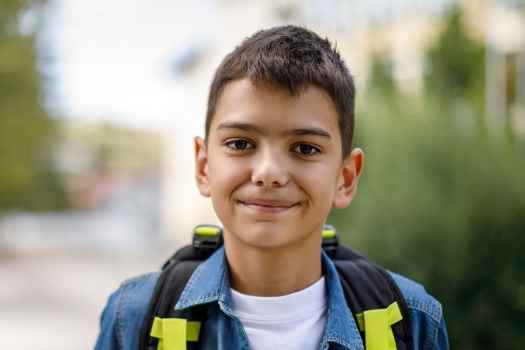
What You Really Don’t Know About Anxiety
Although the word “anxiety” is commonly used, it’s still a very misunderstood condition. To better understand anxiety in kids and teens, it’s important to know what anxiety is and what it isn’t. Here are some common myths about anxiety.
Myth: People Can Just “Snap Out” of Being Anxious
Anxiety isn’t like a light switch that can be flipped on and off. While the worry of a child or teen who is anxious—like being around strangers or being in a small space—may seem trivial, it’s not to them. Because the cycle of worry and avoidance feeds off itself, more often than not, someone with anxiety needs professional help breaking this pattern.
Myth: Anxiety Isn’t Treatable
Anxiety is very treatable. Every case of anxiety is as unique as the kid or adolescent who is diagnosed with it. What works for one person may not work for another, so patience is needed to find the treatment and support needed to help each young person succeed.
Myth: People Need Medication To Manage Their Anxiety
Long-term use of medication is not needed in many cases to treat anxiety. Sometimes short-term use of medication is suggested to reduce symptoms as someone begins a treatment plan. There are many proven ways to treat anxiety, including plans that include meditation and mindfulness, individual and group therapy, exercise, and more. Medication is just one option in treating anxiety that may—or may not—work for the patient.
Myth: Kids Aren’t Anxious, They’re Just Shy
While kids and teens who are shy may be more likely to feel socially anxious, the two are not one and the same. Being shy does not cause extreme anxiety or panic when put in a social environment. Shyness, in addition, is a part of a kid’s personality. Social anxiety is a fear of embarrassment in a social situation that causes avoidance.
Myth: Children and Teens Don’t Have Anxiety, They’re Just Looking for Attention
Anxiety has different physical symptoms in different people. As a result, kids and teens may be angry, irritable, not sleep well, be withdrawn, or throw tantrums. While these behaviors may attract attention, it may be anxiety that’s impacting their brains and actions and causing them to react.
Understanding myths about anxiety is one of the first steps in understanding the condition. The more knowledge we have about it, the more we can help others seek a diagnosis and care without judgment or stigma.
How Can I Tell if a Child or Teen Has Anxiety?
While there are general symptoms of anxiety, a child or adolescent may not have every symptom or have any visible symptoms.
Physical symptoms of anxiety may include:
- Consistent stomachaches or headaches
- Racing heart
- Shortness of breath
- Gastrointestinal issues, including, but not limited to, nausea and vomiting
- Irritable or easily agitated
- Sleeping too little
- Having frequent nightmares
- Low energy
- Constantly moving or being unable to sit still
- Frequent tantrums
Emotional and behavioral symptoms may include:
- Constantly discussing fears and worries
- Spending increased time alone, or avoiding social events
- Worsening educational performance, including skipping classes or the school day altogether
When Should I Seek Help?
If you think that your child or teen is being avoidant and/or extremely distressed, it’s important to seek help to assist with identifying the problem and developing successful coping strategies. The sooner you seek care for a young person, the better chance they have for a positive outcome.
If you think a child or adolescent needs help, please reach out to their pediatrician or a local mental health provider, like McLean.
If you are uncertain where to start, The National Alliance on Mental Health (NAMI) Helpline is a great resource and can be reached by calling 1.800.950.NAMI (6264).
For Parents, Educators, and Professionals
Supporting Kids and Teens
What Causes Anxiety in Kids & Teens?
Many factors can cause anxiety. Factors can be genetic, learned, environmental, or biological.
Genetic
Just like a child can be tall like their parents, they can inherit a tendency to experience anxiety from their parents.
Learned
While some kids are born more anxious than others, children can also mimic anxious behaviors from being around anxious people. Children can also demonstrate anxiety regarding a situation or object after caregivers model fear of and avoidance of the situation or object.
Environmental
Anxiety can develop after a stressful event occurs, including death, sickness, frequently changing homes or schools, being bullied, or being abused. In addition, anxiety can also be a co-occurring condition alongside depression, attention-deficit/hyperactivity disorder, autism spectrum disorders, eating disorders, and other mental health conditions.
Biological
In the brain, neurotransmitters are the chemicals that communicate to our body how we’re supposed to feel. If neurotransmitters aren’t sending the right messages at the right time, people can be biologically prone to being more anxious.
Help Your Child Feel Like a Kid Again
McLean offers world-class anxiety treatment for children, teens, and young adults. Contact us today at 617.855.2820 to learn more about treatment options.
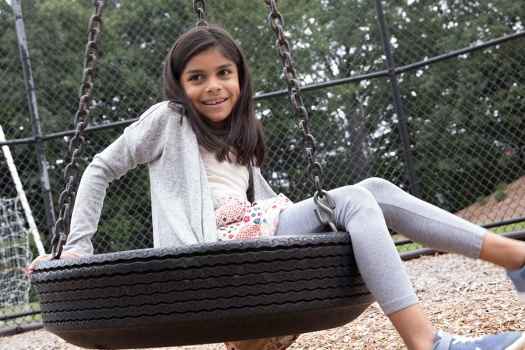
What Treatments for Anxiety Are Available?
Anxiety disorders have multiple kinds of treatments. Everything from therapy and medications to support groups and proven stress management techniques can help people successfully manage their anxiety disorder.
Therapy
Most treatment options for anxiety will involve talk therapy, sometimes referred to as psychotherapy.
Talk therapy is an effective method of treating people with a broad variety of mental health conditions, including anxiety.
Sessions may be held solo, with parents or families, or in a group setting. By working directly with a therapist, patients can learn to better control their symptoms of anxiety.
During therapy sessions, proven treatment methods are used. Cognitive behavior therapy (CBT) with exposure and response prevention therapy (ERP), acceptance and commitment therapy (ACT), and interpersonal therapy (IPT) are common evidence-based therapies for pediatric anxiety.
Cognitive Behavior Therapy With Exposure and Response Prevention
One of the most effective approaches to treat anxiety disorders is cognitive behavior therapy with ERP.
CBT is a talk therapy that helps children learn the connection among their thoughts, feelings, and behaviors, as well as tools to manage them. With exposure and response prevention, they learn to gradually face their fears and realize that they can manage challenging experiences.
These therapies help the patient identify and change their negative thought patterns. CBT may also teach social skills, including lessening social anxieties.
Acceptance and Commitment Therapy
ACT is a behavioral therapy that combines self-acceptance and mindfulness with a commitment to change according to one’s values.
This helps achieve psychological flexibility—meaning that regardless of the anxiety the patient is facing, they can adapt and stay present in the moment.
In ACT, the patient commits to addressing anxieties head-on instead of avoiding them and helps the patient embrace challenging moments.
Interpersonal Therapy
Often used to treat depression, IPT is a shorter-term treatment for anxiety. In IPT, the patients learn to understand their underlying interpersonal issues to better express their emotions.
Some of the interpersonal issues often addressed are changes in social environments, conflict with loved ones, and difficulties at school. IPT can help patients improve their communication and relatability to others.
Medication
Doctors can prescribe different types of medications to treat anxiety. Antianxiety medications reduce the symptoms experienced with anxiety, panic attacks, extreme worry, or fear.
One evidence-based class of medication is known as selective serotonin reuptake inhibitors, or SSRIs. They can relieve anxiety symptoms and reduce depression symptoms, which often coincide with anxiety disorders.
Support Groups
Many support groups exist, either in person or virtually, that help people with anxiety disorders.
Whether a self-help group or support group, it’s suggested that a doctor provide recommendations before proceeding with support groups to ensure children’s health and safety.
Stress Management Techniques
Stress management is especially important for those with anxiety disorders. Meditation and coping strategies help the individual to calm themselves, which can enhance therapy’s effects.
Coping strategies and meditation techniques include:
- Taking time out of your day to unwind
- Eating nutritious meals and limiting caffeine intake
- Exercise, including yoga
- Healthy sleeping patterns, including less screen time before bed
- Deep breathing exercises
- Acceptance
- Learning your triggers
- Talking and sharing experiences with others
- Going to a physician or therapist to talk about stress-lowering strategies
Learn how you can help kids and teens manage their stress
How Is Anxiety Diagnosed?
Anxiety should be diagnosed by trained, licensed clinicians, such as a mental health professional or pediatrician.
Depending on symptoms, a health care provider may run routine lab tests during the initial evaluation to rule out other possible causes of symptoms. In some instances, x-rays, scans, or other imaging studies may be required.
The provider may ask the child and/or parent(s) a series of questions from a standardized questionnaire or may have them complete a self-assessment of symptoms.
Anxiety may be diagnosed alongside additional conditions, as GAD in particular has a high rate of other conditions occurring with it.
In some cases, major depression, substance misuse, post-traumatic stress disorder, and obsessive compulsive disorder may also be present. If this is the case, additional screenings and treatment may be required.
Anxiety Is Treatable—There Is Hope!
Anxiety disorders are so much more common than you may think. If you feel that you may have anxiety or think your child has anxiety, consider seeking help from a mental health professional. While a diagnosis of anxiety may sound frightening, having a diagnosis means that a treatment plan can be created to help your child.
While anxiety is a chronic illness, it is manageable and is nothing to be ashamed—or afraid—of. Contact your child’s pediatrician or a mental health facility like McLean to find the care they need.
Want More Info?
Looking for even more information about anxiety? You may find these resources helpful.
Interesting Articles and Videos and More
Learn more about anxiety and what you can do if you or a loved one is displaying signs of anxiety or related disorders.
- Video: Commonly Asked Questions About Child & Teen Mental Health
- Everything You Need To Know About Anxiety
- Video: Managing Fears and Phobias in Kids and Teens
- Fear, Anxiety, and Phobias: What You Need To Know
- Everything You Need to Know About OCD in Kids and Teens
- Everything You Need To Know About ADHD
- Diet and Mental Health: How Nutrition Shapes Your Well-Being
- Video: Overcoming Perfectionism in Kids & Teens
- Video: What Is Validation and Why Is It So Important?
- Video: Redefining Self-Care in Kids & Teens
- Anxiety and OCD in Kids and Teens: A Course for Parents, Educators, and Professionals
- Find all of McLean’s resources on anxiety and youth mental health
Helpful Links
These organizations may also have useful information:
Anxiety and Depression Association of America
An organization dedicated to increasing awareness and improving the diagnosis and treatment of anxiety disorders in children and adults.
The Child Anxiety Network
This organization aims to provide thorough, user-friendly information about child anxiety. They also offer direction for those who are not sure where to turn when they think their child or a child they know may need professional help to cope with anxiety.
Books About Anxiety

Find Your Fierce
by Jacqueline Sperling, PhD
(Magination Press/American Psychological Association, 2021)
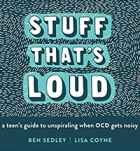
Stuff That’s Loud: A Teen’s Guide to Unspiraling When OCD Gets Noisy
by Ben Sedley and Lisa W. Coyne
(New Harbinger, 2020)
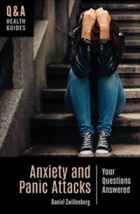
Anxiety and Panic Attacks: Your Questions Answered
by Daniel Zwillenberg
(Greenwood, 2018)


